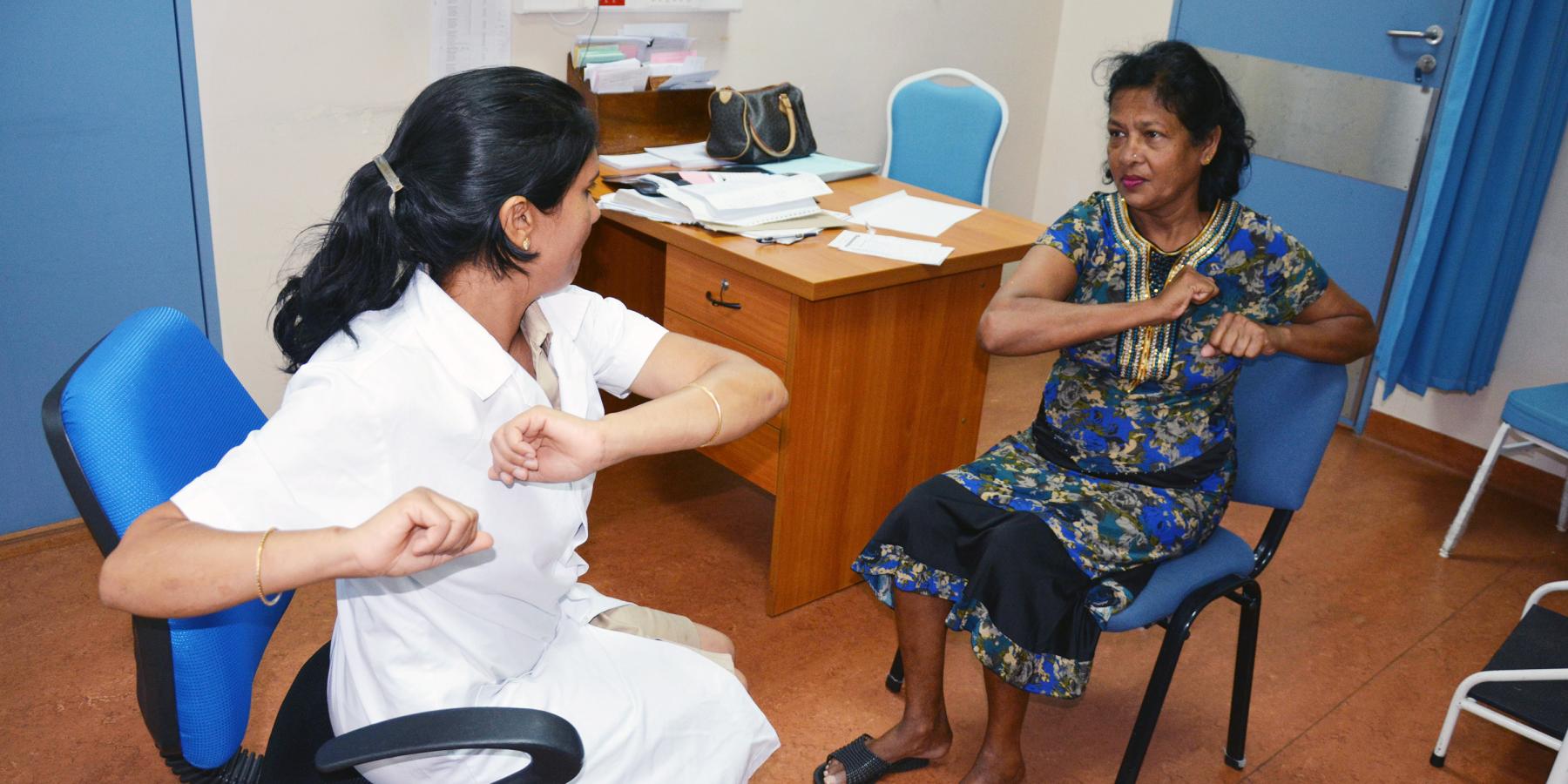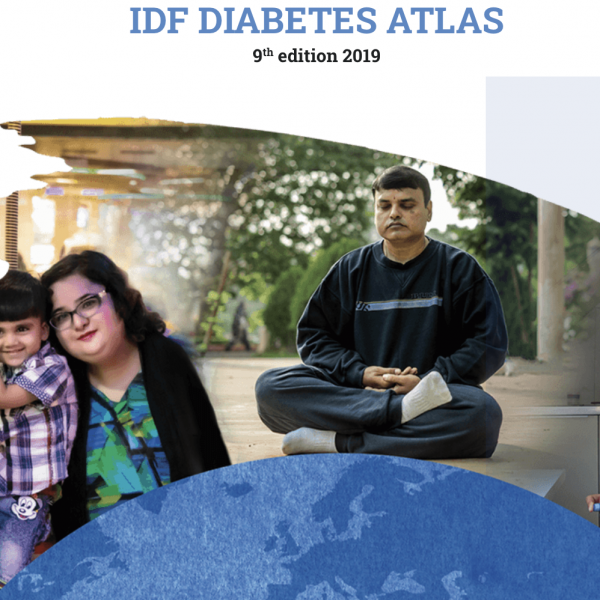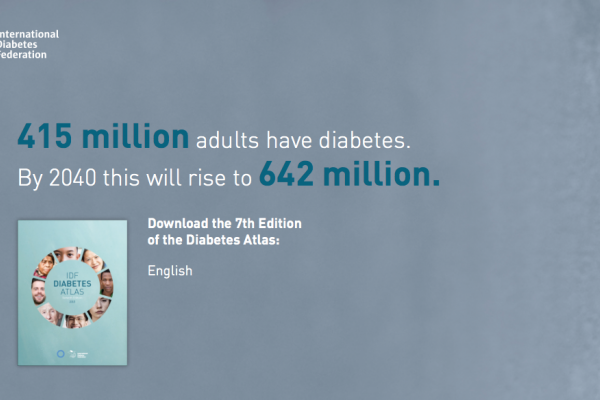Diabetes and its complications are major causes of death in most countries. 415 million people (83% living in LMICs) had diabetes in 2015 and this number is expected to rise to 642 million by 2040 despite better awareness and new developments in treatment and prevention. Around half of people currently living with diabetes do not know they have it.
Diabetes is a chronic condition that occurs when the body cannot produce enough insulin or cannot use insulin, and is diagnosed by observing raised levels of glucose in the blood. Insulin is a hormone produced in the pancreas; it is required to transport glucose from the bloodstream into the body’s cells where it is used as energy. The lack, or ineffectiveness, of insulin in a person with diabetes means that glucose remains circulating in the blood. Over time, the resulting high levels of glucose in the blood (known as hyperglycaemia) causes damage to many tissues in the body, leading to the development of disabling and life-threatening health complications.
There are three main types of diabetes:
Type 1 diabetes is caused by an autoimmune reaction, in which the body’s defence system attacks the insulin-producing beta cells in the pancreas. As a result, the body can no longer produce the insulin it needs. Why this occurs is not fully understood. The disease can affect people of any age, but onset usually occurs in children or young adults. People with this form of diabetes need insulin every day in order to control the levels of glucose in their blood. With daily insulin treatment, regular blood glucose monitoring and maintenance of a healthy diet and lifestyle, people with type 1 diabetes can lead a normal, healthy life. Without insulin, a person with type 1 diabetes will die. The number of people who develop type 1 diabetes is increasing. The reasons for this are still unclear, but may be due to changes in environmental risk factors, and/or viral infections.
Type 2 diabetes is the most common type of diabetes. It usually occurs in adults, but is increasingly seen in children and adolescents. In high-income countries up to 91% of adults with the disease have type 2 diabetes.In type 2 diabetes, the body is able to produce insulin but becomes resistant so that the insulin is ineffective. Over time, insulin levels may subsequently become insufficient. Both the insulin resistance and deficiency lead to high blood glucose levels. Many people with type 2 diabetes remain unaware of their condition for a long time because the symptoms are usually less marked than in type 1 diabetes and may take years to be recognised. Although the exact causes for the development of type 2 diabetes are still not known, there are several important risk factors. The most important are excess body weight, physical inactivity and poor nutrition. Other factors which play a role are ethnicity, family history of diabetes, past history of gestational diabetes and advancing age. The number of people with type 2 diabetes is growing rapidly worldwide. This rise is associated with ageing populations, economic development, increasing urbanisation, less healthy diets and reduced physical activity.
Gestational diabetes affects 1 in 7 births. Women with slightly elevated blood glucose levels are classified as having gestational diabetes. This tends to occur from the 24th week of pregnancy. Women with elevated blood glucose levels during pregnancy are at greater risk of adverse pregnancy outcomes. Gestational diabetes normally disappears after birth but women who have been previously diagnosed are at higher risk of developing gestational diabetes in subsequent pregnancies and type 2 diabetes later in life. Babies born to mothers with type 2 diabetes also have a higher risk of developing type 2 diabetes in their teens or early adulthood.
Many countries are still unaware of the social and economic impact of diabetes. This lack of understanding is the biggest barrier to effective prevention strategies that could help halt the inexorable rise of type 2 diabetes.
Fast Facts on Diabetes (2020):
-
Insulin was discovered 100 years ago - the Centenary will be celebrated in April 2021.
-
Only 1/3 of low- and middle-income countries have the most basic technologies for diabetes diagnosis and management available in primary health-care facilities. Access to essential medicines, including life-saving insulin, and technologies (test strips, glucometers, etc) is limited in low- and middle-income countries.
-
About 65 million people with type 2 diabetes need insulin, but only half of them are able to access it, largely due to high prices. All people with type 1 diabetes need insulin to survive.
-
463 million adults (1-in-11) were living with diabetes in 2019
-
The number of people living with diabetes is expected to rise to 578 million by 2030
-
Diabetes caused 4.2 million deaths in 2019
-
Diabetes mortality rates have increased by 5% since 2000.
-
People with diabetes contribute to the high number of cardiovascular disease deaths (18 million per year).
-
Diabetes was responsible for at least $760 billion in global health expenditure in 2019 – 10% of the global total spent on healthcare
-
1-in-2 adults with diabetes remain undiagnosed (232 million). The majority have type 2 diabetes
-
More than three quarters of people with diabetes live in low and middle-income countries
-
Two thirds of people with diabetes live in urban areas and three-quarters are of working age
-
A fifth of people with diabetes (136 million) are above 65 years old
-
Depending on global region, up to 50% of COVID-19 diagnoses were in people living with diabetes
World Diabetes Day is observed each year on November 14th
Source: IDF Diabetes Atlas Seventh Edition, International Diabetes Federation 2015, WHO and International Diabetes Federation
Living without limits
“Living without Limits” tells the story of America, Alexis, and their families, starting with a diagnosis of Type 1 diabetes and going on to their experience of learning to live with the condition each day. Produced by BBC StoryWorks, Helmsley Charitable Trust and NCD Alliance, the mini-film debunks myths and misconceptions about diabetes, and shines a spotlight on the change agents who are making a difference to turn the tide on noncommunicable diseases (NCDs). To know more about Turning the Tide series click here.




